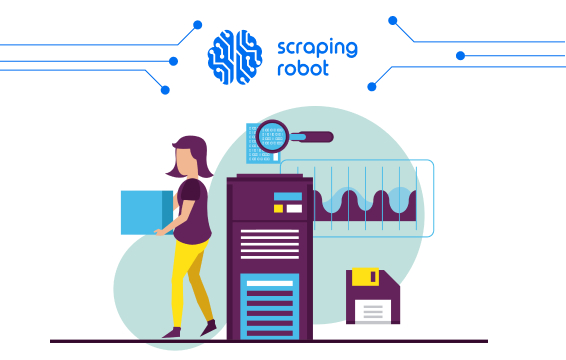How To Ensure Data Quality Metrics With Web Scraping

When you live in a small apartment, ‘quality over quantity,’ is a statement you swear by. The lack of storage space necessitates only holding onto the essentials. While my bookshelf may be overflowing, I try to constantly assess my belongings to stop myself from keeping random trinkets that take up valuable space that could be used to maximize storage. On top of that, moving often and hating packing is a combination that lends itself to simplifying your life.
While the world of data may seem completely different, good housekeeping skills are required to ensure that data meets a rigorous standard. Data quality metrics are used to assess collected data for accuracy and usefulness. Just like limited shelf space in a studio apartment, having too much data that goes unused creates digital (sometimes physical) clutter that makes it harder to find what you need. Without properly managing data, you will lose money, time, and energy. As there are many professional tools and processes for verifying data, web scraping is a great tool that helps enhance data quality, helping you fill in the informational gaps.
If you already know the basics of data quality, then use the table of contents below to jump ahead and discover how to best build and conduct a data quality routine.
Table of Contents
1.What is Data Quality and Why is It Important?
2. What Are The Best Data Quality Tools?
What is Data Quality and Why is It Important?

Data quality has two competing definitions. The quality of data can depend on how useful it is for an intended purpose or how accurately the data describes the real world constructs it’s meant to. The qualities of good data are:
- Completeness
- Consistency
- Conformity
- Accuracy
- Integrity
- Timeliness
It is important to maintain a high standard for quality of information because low-quality data can lead to financial losses, loss of time, and drain the energy of employees having to parse through data as deadlines approach. Just as you get physical exams each year at the doctor, you must regularly inspect and fix the health of your data, or else your decisions and approach will be dictated by irrelevant information.
Regardless of your industry or field, having quality data is a prerequisite for success and decision making. For example, creating specific business goals is essential but data is what helps you bridge the gap between goal and reality. When you can make more data-driven decisions, you will be able to cut all the unnecessary costs from your process and generate new ideas to propel you forward.
What Are The Best Data Quality Tools?

Master data management and data quality management tools are the best tools for checking data quality. While there are a variety of data management programs available, all these processes can be done manually as well.
Data standardization is important as it makes sure all data is presented in the same format, keeping data consistent and easier to parse through. Processes such as erasing duplicates and profiling data -both explained later on in this article- can be done both manually and automatically to help fix easy data mistakes giving you more time to focus on the more subjective aspects of data quality (completeness, timeliness, and accuracy).
How to Perform Data Quality Checks

There are many processes, automatic and manual, that help you check the quality of your data. Below are a few suggestions for getting started and fixing easy data mistakes.
Data governance framework
The most important part of performing ensuring quality data is building a strong data governance framework. A data governance framework is an agreed-upon set of data standards and practices defined by a small business, company, or whoever is regularly using and checking data.
By developing such standards, you make sure everyone is on the same page regarding data quality and professional goals helping avoid misunderstandings in the process. Essential parts of following data quality metrics include deleting data that is incorrect or irrelevant to a purpose. First building a framework makes it easier to decide which information to throw away and which to keep and possibly expand and make further use of.
Erase duplicates
One of the simplest ways to enhance data quality is to remove any duplicate data points. In a marketing context, erasing duplicates can be as simple as making sure each professional contact appears only once on a mailing list, avoiding spamming your valuable contacts. If the mean or average data point is important to accuracy, then removing any accidental duplicates helps ensure that the data remains correct. While this may seem simple, duplicate data is a common issue and also an easy fix. Here is information on how to highlight duplicate values in Excel.
Data profiling
In large businesses, the employees responsible for working with and verifying data quality might change often. If the position itself does not change, then the company’s goals for data use may change. For example, your primary goal might be to use scraping to find the perfect price. Once you find that ideal price point, you will now need new data to meet your next goal of creating a better marketing campaign. Data profiling helps you assess how useful data is for a given project.
When you enter a new phase of growth you must reassess which data is going to serve a given purpose. By profiling data, you can decide whether data is still relevant or if data sets previously limited to one aspect of business (ex. marketing) may be applicable in a different scenario.
Web Scraping and Data Quality Dimensions

Web scraping is the automatic process of extracting data from a webpage. Once extracted, the data is then easily downloaded and shared. This process can be used to either verify data, find new data, or make existing data more complete. Below are suggestions on how to use web scraping as another data quality tool in your toolbox.
Complete product data
While checking the accuracy of data is important, the information must also be complete. Product data, your own or a competitor’s, can often be left incomplete or less than up to date. An easy way to have more complete product data is to use a scraper to scrape product information from e-commerce sites. This is especially useful for the competition since the information is available online. Scraping product descriptions on Amazon, Wayfair, and eBay can help fill in gaps regarding size and dimensions, material, weight, and much more. Incorporating scraping eCommerce sites into your routine will help you stay updated on all things product data, ensuring you don’t fall behind on the latest improvements.
Use public sources to verify information
Companies collect data internally and externally. To verify internal data, you must check the processes used to ensure they are working as designed. Verifying external data involves matching that data against the original data source, which can sometimes be publicly available information. Publicly available datasets include government statistics, stats extracted from web pages, and more. Scraping public sources of data is an easy way to check information against itself. With housing statistics or other national metrics, this information can update often, requiring a rigorous standard of fact-checking.
Fulfill unique data needs with a custom solution
During the process of analyzing data quality, you and your team may discover that while your data is informative at a basic level it requires more supplemental data to enhance the quality and utility. Collecting that additional data may require a custom scraping solution. Custom scraping solutions are built in collaboration with clients and the Scraping Robot team to engineer unique scraping solutions for all your data needs. In addition to creating a custom process, the scraping robot team follows all security guidelines and manages proxies and development so you don’t have to. If during your process you find informational gaps that are hard to fill, a custom scraping solution might be what you need. If this sounds like what you need, contact us to get started.
Conclusion

In a world full of seemingly infinite data sources, it is easy to seek quantity over quality, However, when you only prioritize collecting data it can be harder to ensure the data meets a rigorous standard. After all, data being used to determine the future of your business must be accurate or else you may make misguided decisions. Quality data metrics help you define your data needs and assess whether your current data is relevant to your purpose and is factually correct and as complete as possible. By filling in informational gaps, acquiring supplemental data, and erasing irrelevant data, you will be saving you and your team valuable time that can instead be dedicated to brainstorming future projects.
The information contained within this article, including information posted by official staff, guest-submitted material, message board postings, or other third-party material is presented solely for the purposes of education and furtherance of the knowledge of the reader. All trademarks used in this publication are hereby acknowledged as the property of their respective owners.
